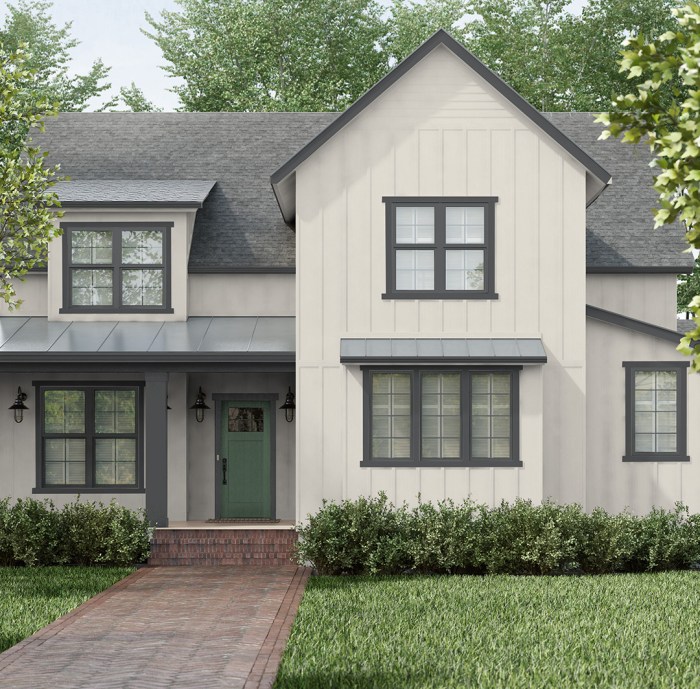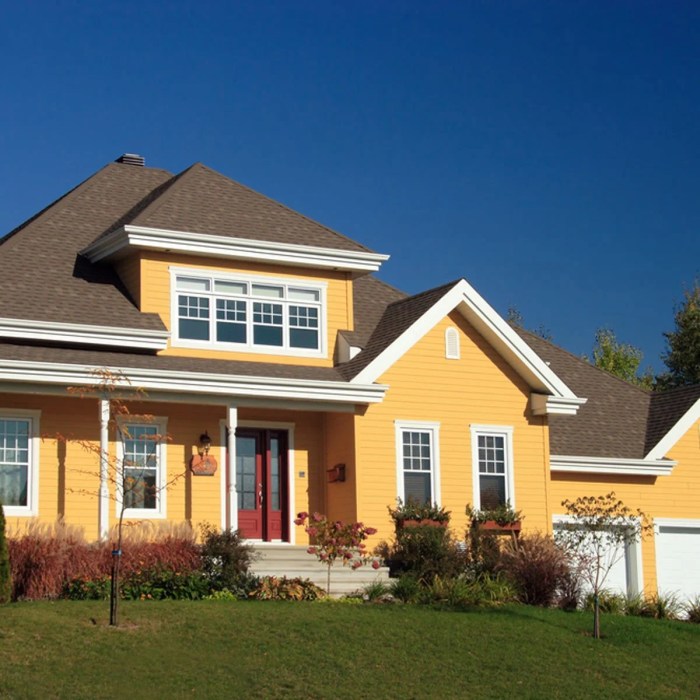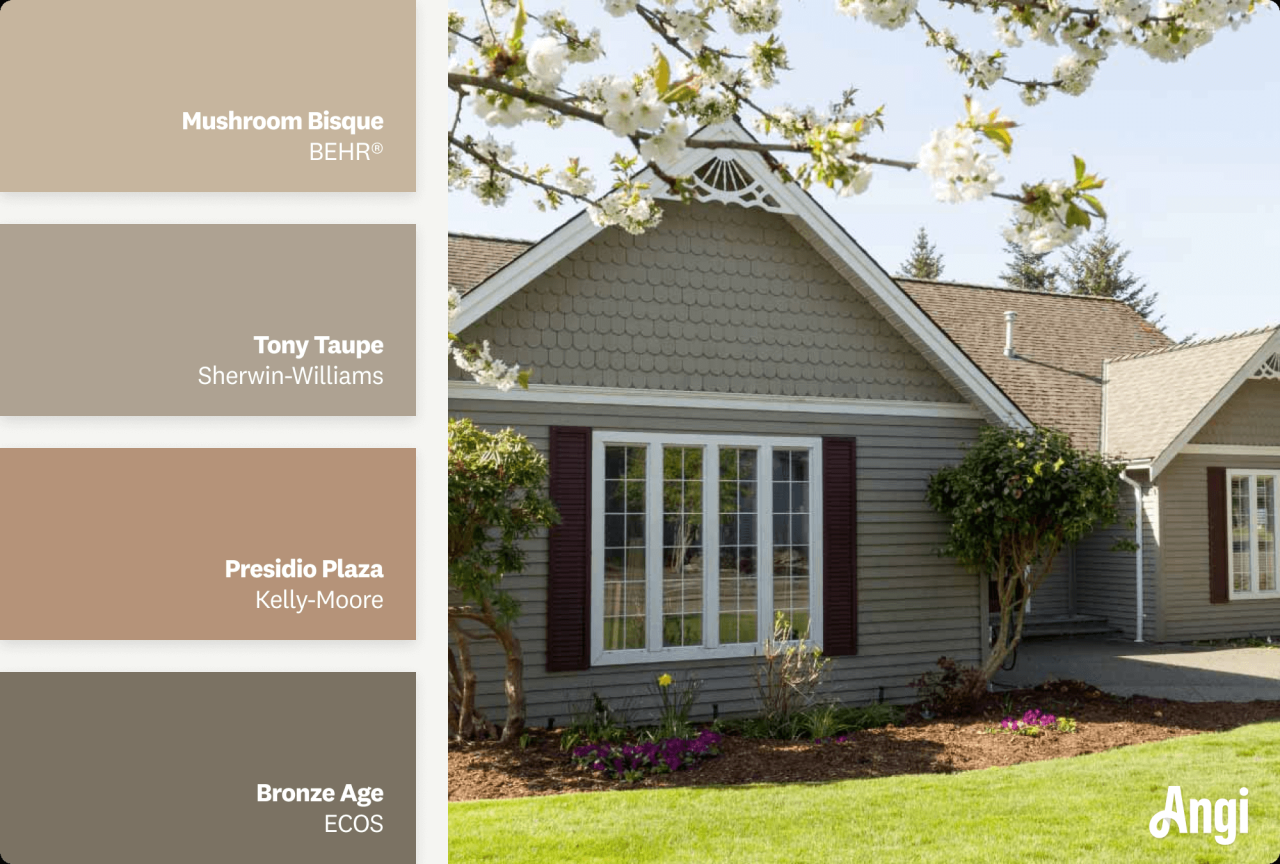The Ultimate Guide to Choosing the Best Exterior House Paint
Exploring the world of best exterior house paint, this introduction sets the stage for an informative and engaging journey, providing insights and advice that will empower homeowners in making the right choices for their exterior painting needs.
In the following paragraphs, we will delve into the various types of exterior house paint, key factors to consider when choosing the best one, application techniques, and tips for maintenance and longevity.
Types of Exterior House Paint
When it comes to choosing the right exterior house paint, there are several types available in the market, each with its own unique characteristics and benefits. Two of the most common types are oil-based paints and water-based paints. Let's take a closer look at each type and compare their features.
Oil-Based Paints
Oil-based paints are known for their durability and ability to provide a smooth and glossy finish. They are highly resistant to wear and tear, making them ideal for high-traffic areas. However, they do take longer to dry compared to water-based paints.
Some popular brands of oil-based exterior house paint include Sherwin-Williams SuperPaint Oil-Based and Benjamin Moore Aura Exterior Paint.
Water-Based Paints
Water-based paints, also known as latex paints, are easy to clean up with soap and water, making them more user-friendly than oil-based paints. They also dry quickly and have low levels of volatile organic compounds (VOCs), making them a more environmentally friendly option.
Popular brands of water-based exterior house paint include Behr Premium Plus Ultra Exterior Paint and Valspar Duramax Exterior Paint.Overall, the choice between oil-based and water-based paints for exteriors will depend on factors such as the desired finish, durability, and environmental impact.
It's important to consider these factors when selecting the right type of exterior house paint for your home.
Factors to Consider When Choosing the Best Exterior House Paint

When choosing the best exterior house paint, homeowners should consider several key factors to ensure long-lasting protection and aesthetic appeal for their property.
Importance of Weather Resistance
Weather resistance is crucial when selecting exterior house paint as it helps protect the exterior surfaces from harsh elements such as rain, snow, UV rays, and extreme temperatures. A paint with high weather resistance will prevent moisture penetration, reduce the risk of mold and mildew growth, and maintain the structural integrity of the house.
Significance of Color Retention and Fade Resistance
Color retention and fade resistance are essential for exterior paints to maintain their vibrancy and appeal over time. Quality exterior paints with superior color retention will resist fading, chalking, and discoloration caused by exposure to sunlight, ensuring that the house looks fresh and attractive for years to come.
Checklist for Evaluating Exterior House Paint Options
- Weather resistance: Ensure the paint is specifically formulated for exterior use and offers protection against moisture, UV rays, and temperature fluctuations.
- Color retention: Look for paints with advanced color retention technology to prevent fading and maintain the desired hue.
- Fade resistance: Choose paints that are fade-resistant to avoid discoloration and maintain the aesthetic appeal of the house.
- Durability: Consider the durability of the paint to withstand wear and tear, frequent cleaning, and exposure to environmental factors.
- Finish: Select the appropriate finish (e.g., matte, satin, gloss) based on the desired look and level of maintenance.
- Brand reputation: Research and choose reputable paint brands known for quality and longevity.
Application Techniques for Exterior House Paint
When it comes to painting the exterior of your house, the application technique plays a crucial role in achieving a professional finish. Proper surface preparation, choice of application method, and priming are essential steps in ensuring a successful paint job.
Preparing the Exterior Surface
Before applying paint to the exterior surface of your house, it is important to prepare the area properly. This includes cleaning the surface to remove dirt, dust, and debris. Any loose or flaking paint should be scraped off, and the surface should be sanded to create a smooth base for the new paint to adhere to.
Application Methods
There are several methods for applying exterior house paint, each with its own advantages and considerations.
- Brushing: Using a paintbrush is a traditional method that allows for precision and control, especially in detailed areas.
- Rolling: A paint roller is ideal for covering large, flat surfaces quickly. It can provide a smooth and even finish when used correctly.
- Spraying: Paint sprayers are efficient for covering large areas in a short amount of time. However, they require skill to avoid overspray and achieve an even coat.
Tips for Achieving a Smooth Finish
- Work in small sections to ensure that the paint does not dry too quickly.
- Use long, even strokes to prevent lap marks and ensure a consistent finish.
- Avoid painting in direct sunlight or on very hot days to prevent the paint from drying too quickly.
- Apply multiple thin coats of paint rather than one thick coat to achieve better coverage and durability.
Importance of Priming
Before applying exterior house paint, it is crucial to prime the surface. Primer helps the paint adhere better, improves coverage, and provides added protection against the elements. It also helps seal the surface and prevents stains from bleeding through the new paint.
Maintenance and Longevity of Exterior House Paint

Maintaining the exterior paint job of your house is essential to ensure its longevity and keep it looking fresh and vibrant. By following proper maintenance techniques, you can extend the lifespan of your exterior house paint and prevent common issues that may arise over time.
How to Maintain the Exterior Paint Job
- Regularly inspect the exterior paint for any signs of wear, peeling, or fading.
- Address any issues promptly by cleaning and touching up the affected areas.
- Pressure wash the exterior of your house at least once a year to remove dirt, debris, and mildew that can damage the paint.
- Trim trees and bushes near the house to prevent branches from scratching or damaging the paint.
Common Issues with Exterior House Paint
- Peeling: Caused by moisture seeping into the wood or substrate underneath the paint.
- Fading: Due to exposure to harsh sunlight and UV rays.
- Cracking: Resulting from temperature changes and the expansion and contraction of the paint.
Best Practices for Cleaning and Touching up Exterior House Paint
- Use a mild detergent and water solution to clean the exterior paint gently.
- Avoid using harsh chemicals or abrasive cleaners that can damage the paint.
- Apply a fresh coat of paint to touch up any areas with signs of wear or damage.
- Match the paint color and finish to ensure a seamless touch-up job.
Environmental Factors Affecting Longevity
- Sunlight: Exposure to direct sunlight can cause fading and deterioration of the paint.
- Humidity: High humidity levels can lead to peeling, cracking, and mold growth on exterior paint.
- Temperature Changes: Extreme temperature fluctuations can cause the paint to expand and contract, leading to cracking and flaking.
Last Point

In conclusion, the discussion on best exterior house paint sheds light on the importance of selecting the right paint for your home, ensuring not just aesthetic appeal but also durability and protection against the elements. Make informed decisions and enjoy a beautifully painted exterior for years to come.
FAQ Explained
What are the key factors to consider when choosing exterior house paint?
Consider factors like durability, weather resistance, color retention, and application ease.
How can I maintain the longevity of my exterior house paint?
Regular cleaning, touch-ups, and addressing issues promptly can help prolong the lifespan of your exterior paint.
What are some common issues that may arise with exterior house paint?
Issues like peeling, cracking, or fading can occur over time due to exposure to the elements.




